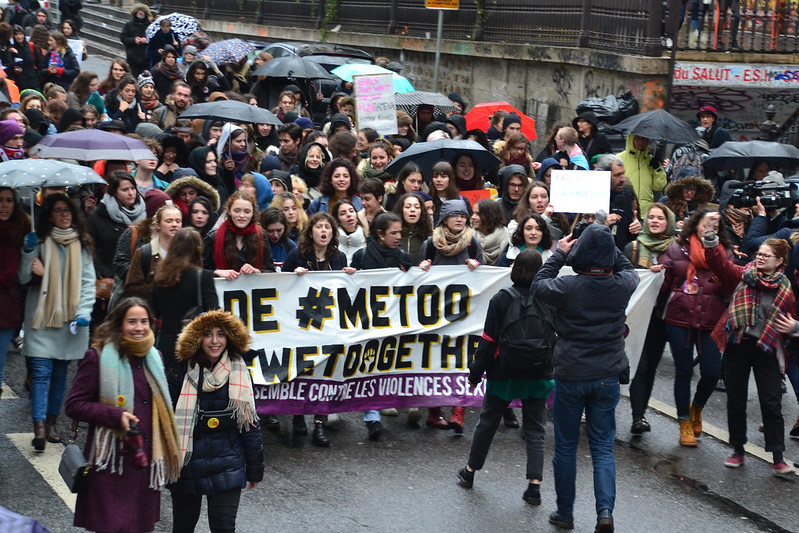Research and testimony are increasingly showing what many women have long known: that the Internet is not an equal space.

In the first few decades of the Internet, much of the world was enraptured with its infinite possibilities for connecting the world together and altering the ways in which humans interact. And true to that expectation and hope, the Internet has extended the frontiers for expression, art, sharing and receiving information, and speaking out against wrong-doings. It has transformed the economy, challenged borders, and flipped the notion of proximity on its head.
The Internet and technology also have a deeply personal characteristic. Devices have become part of our daily lives—we carry them everywhere we go—and they have enabled us to redefine ourselves, and to build and maintain relationships quicker and despite great distances.
This duality of technology and the Internet—its simultaneous ability to be vast yet intimate—has enabled people to express themselves in unique ways, but has also brought with it some serious challenges. Where open channels into each other’s lives exist, the spread of harassment, abuse and vitriol can be equally pervasive and deeply personal.
An Unequal Internet
Alarmingly, research and testimony are increasingly showing what many women have long known: that the Internet is not an equal space. The online landscape bears more risks for women than for men, and gets riskier depending on other parts of her identity, such as race or religion or if she works as a journalist or in another public-facing job.
Attacks and abuse online can include stalking, rape threats, doxing, the nonconsensual release of intimate images and videos, Distributed Denial of Service (DDoS) attacks, and a barrage of other harassment with the intent to shame and silence. The most severe attacks can turn into physical violence and threaten a woman’s life.
This scale of online abuse has forced some women to resort to self-censorship or to disengage from their work or online platforms. In an era where technology has become a necessity, the consequences of women being unable to access the Internet safely and securely, without facing misogynist abuse, cannot be overstated.
If left unaddressed, this issue will have direct ramifications on women’s right to freedom of expression, as well as equality in society as a whole.
Silence Is Not the Answer

Despite all the risks and challenges that addressing online harassment and abuse entails, women around the world have taken action to speak out against it and to challenge this in the online sphere.
Women have used technology to build solidarity networks for one another in response to these threats—such as HeartMob, Take Back the Tech, and Digital Rights Foundation’s Cyber harassment helpline. ARTICLE 19 has published policy briefings with recommendations for governments and technology companies on how to take meaningful steps toward changing the legal and technological landscape in support of women. The International Women’s Media Foundation is spearheading a coalition of organizations seeking to solve this very issue.
These initiatives, created by women for women, provide invaluable resources on how to respond to specific online threats, offering documentation capabilities and messages of support to those faced with online harassment and abuse.
In the United States, the chorus of #MeToo has shown the power of online social movements in effecting real world changes and challenging societal attitudes toward the normalization of sexual harassment. In this instance, women were able to connect individual experiences to a shared push for change. These types of movements to counter discrimination and abuse are powerful, and show how the Internet can be harnessed for the progression of women’s rights. It shows how women, when given full access to technological platforms, can reclaim the Internet and use it to amplify their voices and challenge discrimination.
Speaking Up for Gender Equality Online
Ensuring women are free from abuse and able to speak out in these spheres is essential to bringing about equality not only online, but in society as well. As Internet usage continues to grow around the world, we must ensure its opportunities for connection and expression are available to all, without abuse or discrimination. We must continue to speak up against online harassment and abuse of women, and take action to ensure the Internet is a space for all.
Get caught up on the Ms. 16 Days of Activism collection.
You may also like:



